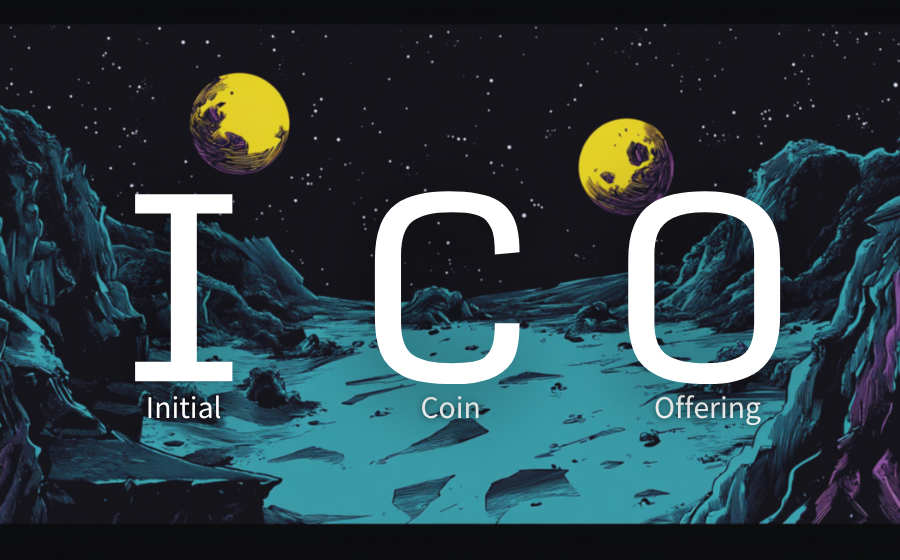
KEYTAKEAWAYS
- TradFi: Centrally governed, slower transactions, higher fees, and limited accessibility but offers stability and regulation.
- CeFi: Balances transparency, faster transactions, moderate fees, and beginner-friendly interfaces.
- DeFi: Decentralized governance, instant transactions, variable costs, and full user autonomy with global reach.

CONTENT
Compare TradFi, CeFi, and DeFi to understand their differences in governance, transparency, security, and user experience. Learn which financial system suits your needs and goals.
WHAT IS CEFI?
Centralized Finance (CeFi) refers to financial services that are managed by centralized organizations or intermediaries, primarily using cryptocurrencies.
In CeFi, users entrust their funds to platforms that provide services such as trading, lending, and interest-bearing accounts.
These centralized entities manage user assets, execute transactions, ensure custody, and comply with regulatory requirements.
CeFi platforms operate similarly to traditional financial institutions but leverage digital assets.
Users are typically required to complete identity verification processes, such as Know Your Customer (KYC) and Anti-Money Laundering (AML) policies, to meet regulatory standards.
Key Features of CeFi
- Centralized Control
- Custody Services: CeFi platforms hold and manage users’ private keys, maintaining custody of their assets.
- Centralized Order Books: Internal systems match buy and sell orders within the platform.
- Intermediary Oversight: Central entities facilitate transactions and ensure regulatory compliance.
- Regulation and Compliance
- Identity Verification: KYC and AML processes are mandatory to prevent fraud and illegal activities.
- Licensing and Registration: CeFi companies often operate under financial regulations with necessary licenses.
- Reporting Obligations: Platforms comply with tax laws and regulatory reporting requirements, ensuring transparency.
- Wide Range of Services
- Cryptocurrency Trading: Facilitates the buying, selling, and exchanging of digital assets.
- Interest-Bearing Accounts: Users can earn interest by depositing cryptocurrencies.
- Crypto Loans: Borrow funds by using cryptocurrencies as collateral.
- Payment Services: Support cryptocurrency payments and cross-border remittances.
- User-Friendly Experience
- Simplified Onboarding: Easy account creation and deposit processes.
- Customer Support: Dedicated teams to assist users with issues and inquiries.
- Intuitive Platforms: Accessible web and mobile applications with straightforward interfaces.
- Liquidity Provision
- Market Depth: Centralized matching mechanisms ensure high liquidity.
- Fiat Integration: Supports direct conversions between cryptocurrencies and fiat currencies.
- Institutional Partnerships: Collaborates with banks and payment processors to enhance services.
- Security Measures
- Advanced Security Protocols: Encryption, two-factor authentication (2FA), and cold wallet storage solutions.
- Insurance Coverage: Some platforms offer protection against specific types of losses or defaults.
- Regulated Custodians: Professional management of assets to mitigate risks for users.
>>> More to read: Choosing the Right Cryptocurrency Exchange: CEX vs DEX

WHAT IS DEFI?
Decentralized Finance (DeFi) refers to financial applications built on blockchain networks, primarily Ethereum, that operate without centralized intermediaries.
DeFi platforms leverage smart contracts—self-executing contracts with terms embedded in code—to automate financial transactions and services in a transparent and trustless manner.
The core goal of DeFi is to create an open financial system that anyone with internet access can participate in.
By removing intermediaries such as banks and brokers, DeFi reduces costs, increases transaction speed, and minimizes risks associated with centralized control.
Users retain full custody of their assets and directly interact with Decentralized Applications (DApps) to perform financial activities.
>>> Learn more about: What is DeFi?
Key Features of DeFi
- Decentralization
- Blockchain-Based: DeFi platforms run on decentralized blockchain networks without a central authority.
- Peer-to-Peer Transactions: Users interact directly with one another through smart contracts.
- Distributed Ledger: Transactions are maintained across a network of nodes, ensuring transparency and security.
- Permissionless Access
- Open Participation: Anyone can access DeFi services without geographic or socioeconomic restrictions.
- No Entry Barriers: No need for traditional identity verification or credit checks.
- Global Accessibility: Services are available to anyone worldwide with internet access.
- Transparency and Immutability
- Public Ledger: All transactions are recorded on the blockchain and accessible for public viewing.
- Immutable Records: Once recorded, transactions cannot be altered or deleted.
- Auditable Code: Smart contract code is typically open-source, allowing the community to review and verify it.
- Smart Contracts
- Automated Execution: Financial agreements execute automatically through code, requiring no manual intervention.
- Programmability: Complex financial logic can be encoded into smart contracts to enable advanced functionalities.
- Interoperability: Smart contracts can interact with other contracts and protocols, enabling diverse applications.
- Non-Custodial Nature
- User Asset Control: Users retain full control of their private keys and funds.
- Elimination of Intermediaries: Reduces reliance on third-party custodians or service providers.
- Composability
- Interconnected Protocols: DeFi applications can seamlessly integrate with each other to enable advanced financial products.
- Modular Architecture: Developers can build new services by combining existing protocols.
- Tokenization
- Asset Representation: Physical and digital assets can be tokenized and represented on the blockchain.
- Liquidity Provision: Tokens can be traded across multiple platforms or used as collateral for loans.
>>> More to read: What is a Smart Contract?

WHAT IS TRADFI?
Traditional finance, commonly referred to as TradFi, has been a cornerstone of the global economic system for centuries.
It encompasses a wide range of financial institutions, market tools, and regulatory frameworks designed to facilitate capital flow, investment, and economic growth.
How TradFi Operates
TradFi relies on government-regulated financial institutions and intermediaries to centrally manage activities such as banking, lending, investment, and insurance.
Operating on a layered structure, institutions act as intermediaries between parties, ensuring compliance with legal and regulatory standards.
The system is built on trust in these institutions, rigorous oversight, and established infrastructure for payments and securities trading.
Key Features of TradFi
- Centralized Management
- Financial Intermediaries: Banks, insurance companies, and brokerage firms manage transactions and services.
- Central Banks: Institutions like the Federal Reserve (USA) and the European Central Bank control monetary policy, influencing interest rates and money supply.
- Oversight and Control: Central authorities regulate financial activities to ensure stability and compliance.
- Strict Regulation and Compliance
- Regulatory Bodies: Entities like the U.S. Securities and Exchange Commission (SEC) and the Financial Conduct Authority (FCA) oversee markets to protect investors.
- Compliance Requirements: Standards like Know Your Customer (KYC) and Anti-Money Laundering (AML) protocols are mandatory.
- Established Infrastructure
- Payment Systems: Networks like SWIFT, ACH, and wire transfers facilitate domestic and international payments.
- Securities Exchanges: Centralized platforms like the NYSE and NASDAQ enable trading of securities.
- Clearing and Settlement Systems: Institutions ensure accurate transaction processing and settlement.
- Trust and Security
- Deposit Insurance: Programs like the Federal Deposit Insurance Corporation (FDIC) provide coverage for deposits up to a certain limit.
- Legal Recourse: Customers enjoy legal protections and can seek remedies through courts.
- Auditing and Reporting: Regular audits and financial reports enhance transparency.
- Diverse Financial Tools and Services
- Traditional Investment Products: Stocks, bonds, mutual funds, certificates of deposit (CDs), and derivatives.
- Credit Services: Personal loans, mortgages, credit cards, and credit lines.
- Insurance Products: Life, health, auto, and property insurance.
- Limited Accessibility
- Barriers to Entry: Minimum account balances, credit checks, and identity requirements may exclude underbanked populations.
- Geographical Constraints: Access to services can be limited in rural or underdeveloped areas.
TradFi remains a traditional and stable financial system. However, its centralized nature and accessibility limitations have become focal points of challenges posed by emerging financial systems like DeFi and CeFi.
>>> More to read: How to Get Crypto Passive Income Easily?

KEY DIFFERENCES BETWEEN TRADFI, CEFI, AND DEFI
- Control and Governance
- TradFi: Governed by central banks and regulatory bodies through strict oversight and intermediaries.
- CeFi: Centralized platforms manage services, assets, and transactions.
- DeFi: Users govern through smart contracts and token holders, retaining full control of their assets.
- Transparency
- TradFi: Processes are opaque with limited internal visibility.
- CeFi: Offers more transparency than TradFi but lacks the openness of DeFi protocols.
- DeFi: Built on blockchain with fully auditable, publicly accessible records.
- Security and Trust
- TradFi: Relies on institutional trust, regulatory oversight, and deposit insurance.
- CeFi: Users trust platform security but face risks like hacking and custody failures.
- DeFi: Depends on blockchain and smart contract security, with risks tied to technical vulnerabilities.
- Transaction Speed and Costs
- TradFi: Slow transactions due to intermediaries, with high service fees.
- CeFi: Faster than TradFi but involves moderate platform fees.
- DeFi: Transactions are nearly instant, but costs vary with network congestion and gas fees.
- Asset Custody
- TradFi: Institutions control user funds and accounts.
- CeFi: Platforms manage custody, reducing user control.
- DeFi: Users maintain full custody of their assets via non-custodial wallets.
- Regulation and Compliance
- TradFi: Strictly adheres to KYC, AML, and other regulatory frameworks.
- CeFi: Balances compliance with crypto services, following KYC/AML but subject to regulatory uncertainties.
- DeFi: Operates outside traditional regulatory frameworks, posing compliance and legal challenges.
- Liquidity and Market Depth
- TradFi: Offers high liquidity and stable markets supported by institutional infrastructure.
- CeFi: Provides deep liquidity and fiat integration through centralized order books.
- DeFi: Liquidity relies on decentralized protocols and user participation, with limitations in smaller markets.
- User Experience
- TradFi: User-friendly but often inaccessible to underbanked populations.
- CeFi: Simplified interfaces and customer support make it beginner-friendly.
- DeFi: Steep learning curve, requiring technical knowledge to interact effectively with decentralized platforms.
Conclusion
Choosing between TradFi, CeFi, and DeFi depends on your financial objectives, risk appetite, and technological proficiency.
- For stability and regulation: TradFi is the best fit if you value reliable services under strong regulatory frameworks.
- For crypto exploration with support: CeFi offers a user-friendly gateway into the world of cryptocurrencies, with accessible support and some regulatory oversight.
- For innovation and autonomy: DeFi is ideal if you seek cutting-edge financial opportunities, complete asset control, and are prepared to navigate a technology-driven, less-regulated environment.
Before deciding, ensure you conduct proper research and consult a financial advisor to make choices tailored to your needs and risk tolerance.


















